DIY kitchen decoration and repair: sequence of actions
Decorating a kitchen with your own hands is a more complex and responsible process than repairing any other room. We have to deal with the need to place plumbing fixtures, household electrical appliances, furniture, and the arrangement of communications in a relatively small area. It is quite difficult to complete such a volume of work with your own hands, and even with high quality, but it is possible. It is necessary to take into account the variety of finishing materials for the kitchen, think over various options for finishing the kitchen, and also study the features and sequence of repairs.
So where to start renovating your kitchen?
Preparation: choosing finishing materials for the kitchen
Kitchen floor: which is better?
The best materials for flooring are:
- Ceramic tile. It is resistant to moisture, impervious to dirt and physical stress. The variety of floor tiles is huge, which allows you to choose a unique option, for example, with an imitation of an old wooden floor, metal, marble, etc. The disadvantage of the coating is the complexity of installation and low thermal insulation;

- Linoleum. It is considered the most popular material for the kitchen. You can easily lay it with your own hands. Linoleum is notable for its low cost, long service life, and immunity to spilled liquids. It differs in its heat capacity, composition, and the presence of a lining. The disadvantage is the possibility of cuts and punctures with sharp objects;

- Cork floor. It is the most pleasant floor material. Moreover, it is considered the most environmentally friendly and warm coating. The coating is extremely useful for people with back problems. The cork does not absorb moisture and cooking fumes. It is laid on a substrate made of fiberboard or plywood. From above, the cork is covered with impregnation and a layer of varnish. The disadvantages include the possibility of stains from dyes or grease, as well as low mechanical strength;
- Laminate. It is easy to fit and is distinguished by its durability. However, one should take into account the low resistance of the material to liquids spilled on the floor. Getting into the joints between the laminate, moisture gradually leads to the swelling of the boards;

- Parquet board or parquet. If you provide normal care for a wooden floor, then such a coating can serve for decades. However, wood does not tolerate high humidity very well, which can lead to its gradual deterioration and discoloration..
How to decorate the walls in the kitchen?

Kitchen walls tend to be more heavily soiled. It is wise to use wall coverings that are easy to clean. It is recommended to use the following finishing materials for the kitchen:
- Washable wallpaper. Behave well wallpaper, covered with a layer of protective film that facilitates their care. Also, you can use dyed non-woven wallpaper;

With the help of wallpaper, you can easily give the desired pattern or shade to the kitchen walls, hide all their defects. The lack of wallpaper is manifested in a low resistance to mechanical damage. A special type of wall covering – liquid wallpaper, is a thick mass applied to the wall with a spatula;
- Dye. Decorating walls in the kitchen with paint is considered an inexpensive and easy way to repair. Use a semi-matt washable paint to cover up major wall imperfections. The painted surface can be quickly repainted in a different color. The disadvantage of paint is that various flaws will be visible on the walls, and the surface itself will quickly become dirty;
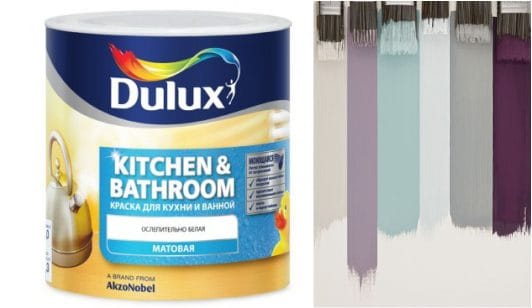
- Decorative plaster. She is able to hide all the unevenness of the walls. With its help, they create unique compositions and drawings on the walls of the kitchen. The plaster is safe for health, can be easily cleaned and perfectly complements any interior. But it is difficult to dismantle it during subsequent repairs;

- Ceramic tile. Usually only tiles are laid out kitchen apron, and the main walls are finished with one of the above materials.
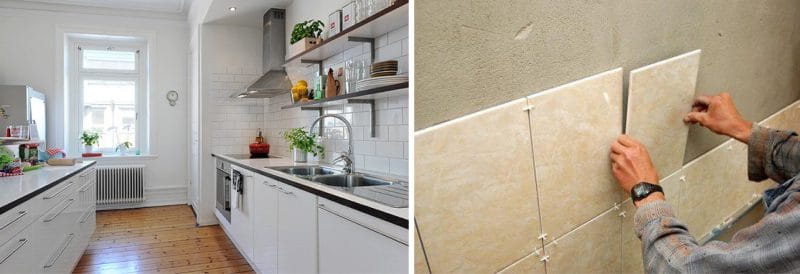
These guidelines should help you determine how to decorate the walls in the kitchen..
How to decorate the ceiling in the kitchen?
There are several design options for the kitchen ceiling:
- Suspended ceiling, the main material of which is plastic panels or moisture resistant drywall. Plastic is not afraid of drops of fat, steam and moisture, and almost no maintenance is required. Drywall is just as good, it even allows you to create multi-level structures, but it requires whitewashing, which needs to be updated periodically. The general drawback of such ceilings is the indent of a dozen centimeters from the rough ceiling. This is important for apartments with low ceilings. But in the resulting gap, you can hide all communications;

- Stretch ceiling. It practically does not take up space under the ceiling, and the PVC material is not afraid of evaporation, moisture and grease. The canvas is perfectly washable in case of contamination. Note the opportunity to pick up not only a white ceiling, but also any other shade and texture. The vulnerability of the canvas to sharp objects and the difficulty of installing with your own hands are the main design flaws;
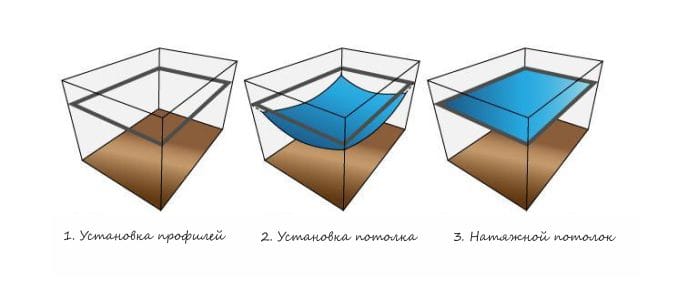
- Ceiling tiles. Made of expanded polystyrene, this tile is the cheapest option for finishing the ceiling. Plates perfectly hide all ceiling defects. Changes quickly if necessary. But choose only laminated tiles that are easy to clean and not so dirty. Disadvantages include the need for frequent maintenance and sensitivity to heat from incandescent bulbs.
Determine the sequence and start the repair
When you have decided on the choice of building materials, the decoration of the kitchen should be carried out in a certain sequence, excluding the return to previous stages and the alteration of any discovered deficiencies.
The sequence of kitchen renovation:
- Initially, the kitchen is freed from all furniture and old communications, including electrical wiring.
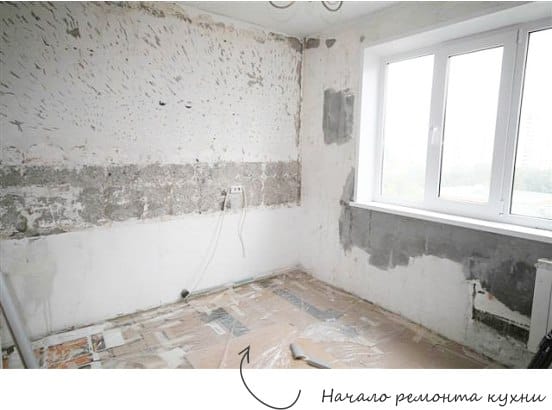
- Rough work is being done on leveling and finishing the ceiling, walls and floor. If necessary, remove the old floor covering.
- At the same stage, all windows and doors are replaced, if necessary..
- New communications are being laid.
- Ceiling installation, wall decoration, flooring is being carried out.
Rough kitchen finish
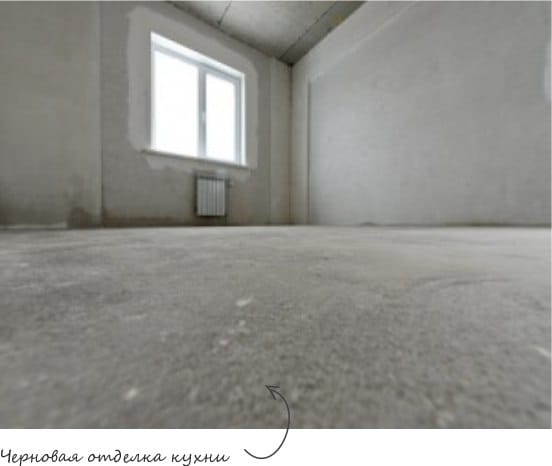
Where to start renovating a kitchen:
- Laying new pipes, installing water meters (if necessary), connecting the heating system.
- In place of old metal pipes, polypropylene or metal-plastic analogs are installed. These modern materials are convenient not only because they are not clogged with deposits, but also because they allow you to do the installation yourself.
Attention! It is forbidden to carry gas communications on your own!
- In the walls and ceiling it is necessary lay new electrical wiring, choosing a suitable cable section. Consider the supply of electricity to several places in the room, including the kitchen backsplash.
- The ceiling frame is mounted or leveled by plastering.
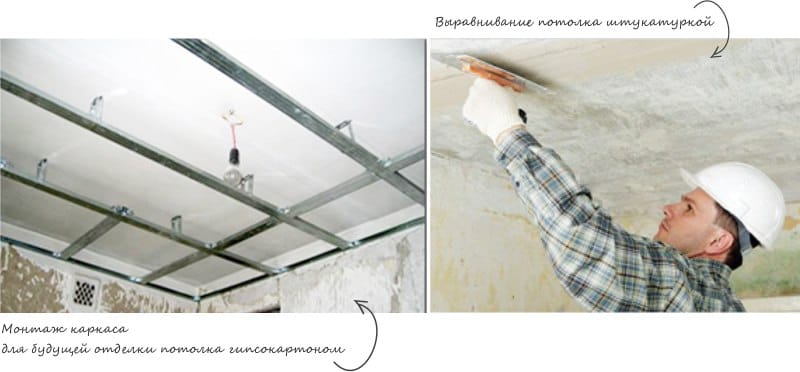
Walls must also be leveled with plaster mixes..
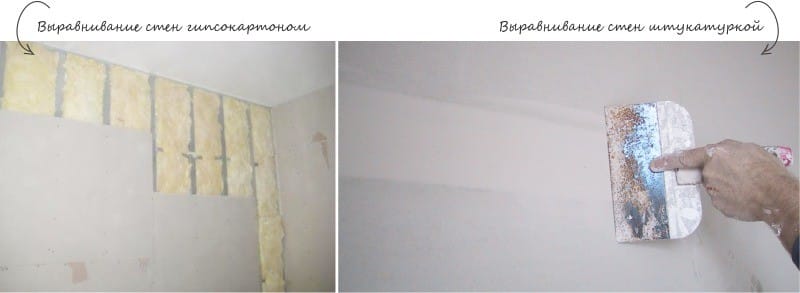
After the plaster hardens, the surfaces are cleaned. For leveling the walls, you can use drywall, through which even very significant irregularities are eliminated. You can install it on a prepared frame or glue. Plasterboard surfaces are plastered and sanded.
- If there is a concrete screed on the floor, then it is leveled to an ideal state. If there are boards on the floor, they are strengthened. Often the boards are covered from above with sheets of fiberboard for insulation and elimination of cracks.
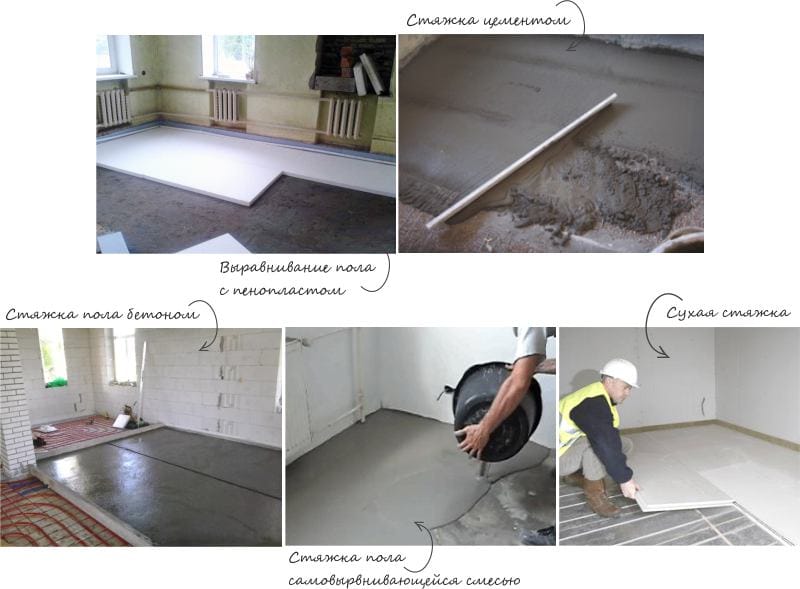
Installation of windows and doors
Until the final finishing of the premises is completed, it is recommended to replace windows and doors. It is desirable to prefer plastic windows, although some people prefer modern wooden structures. It is difficult to change windows with your own hands if you are not a master in this area, so take care of calling the measurer in advance. Please note that the windows will take about two weeks to manufacture..
The door to the kitchen can be made of any material. This is wood, chipboard, and plastic. Your choice should correspond to the general idea of \ u200b \ u200bdesigning the interior of the kitchen. The door design can also vary. This is a traditional hinged door, a sliding wardrobe model, and a folding accordion door..
External finishing
At this stage, the final finishing of the premises is carried out. Work starts from the ceiling. There, on the frame or without it, the selected material is attached (plastic, polystyrene tiles), or the stretch ceiling is installed by specialists. The walls are primed, painted, whitewashed, decorative plaster applied. Or wallpaper is glued. The kitchen apron is finished with one of the selected materials..
The floor covering is laid last. If laying is carried out on a concrete screed, then it is necessary to provide for the presence of waterproofing and insulation at the bottom of the floor covering.
Apron finishing options

There are several design options for a kitchen apron:
- Ceramic tile. It is durable, not afraid of dirt, easy to clean. Do it yourself on the wall. For a small kitchen, smaller tiles should be preferred. For example, 10 x 10 cm;
- Glass. This is the most progressive choice. The glass is quickly washed, allowing you to create a unique backlight. On such an apron you can place a picture or a photograph. Tempered glass is used. Option with frosted or tinted glass is possible. The absence of seams facilitates the maintenance of the apron. The disadvantage is fragility, which can manifest itself during installation or operation;
- MDF. Easily cleaned from dirt. The color of the apron can be selected based on the color of the rest of the furniture. Modern MDF panels are able to imitate many building materials such as brick, marble, tile, stone. But there is one limitation. Since the board is made of wood, it is undesirable to use it in the presence of a gas stove..
Installation of sinks, mixers, hoods, lamps, sockets and switches
At this stage, all the missing devices are mounted. At the prepared places, switches and sockets are installed, lamps, sconces and a chandelier are attached and connected.
A kitchen hood is being installed. If you also purchase new furniture, then select in advance the color, size and design of the hood so that it is harmoniously combined with the furniture..
Installation of a sink, connection and inspection of plumbing fixtures.
Fine finishing, final stage
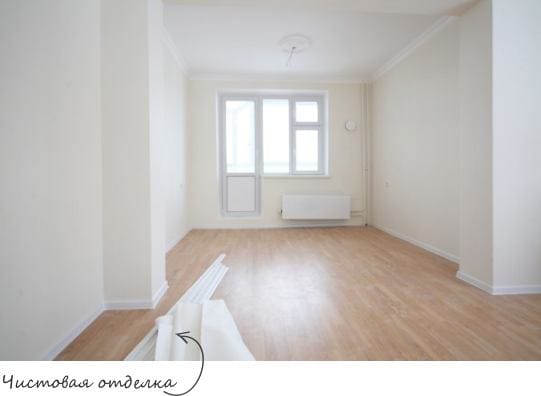
The renovation of the kitchen is almost complete. All that remains is to install the floor skirting boards, hang blinds or curtain moldings on the windows and the curtains themselves.
Kitchen furniture is brought into the room and placed in its place. Cupboards are hung on the walls.
Do-it-yourself kitchen decoration will be your pride and will also save you a lot of money. It is only important to adhere to certain construction technologies and use high-quality materials..
